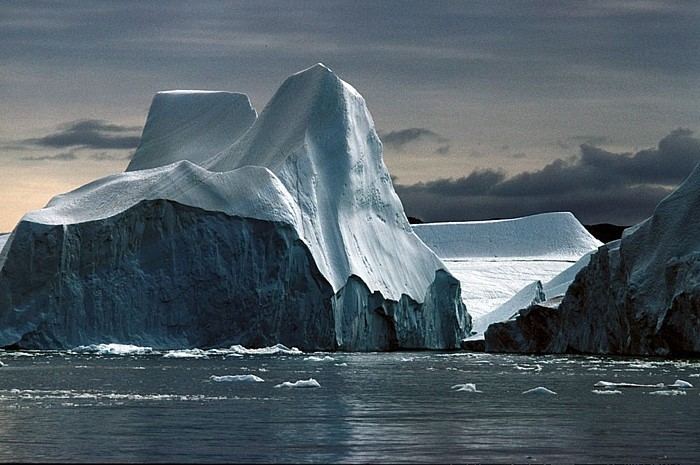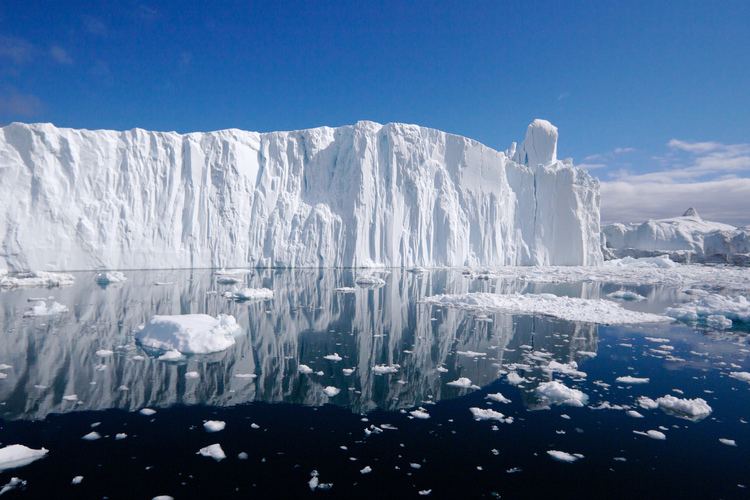Type Natural Reference 1149 | Criteria vii, viii UNESCO World Heritage Site inscription 2004 | |
 | ||
UNESCO region Europe and North America | ||
Ilulissat icefjord large iceberg breaking over
Ilulissat Icefjord (Greenlandic: Ilulissat Kangerlua) is a fjord in western Greenland. Ilulissat Icefjord was declared a UNESCO World Heritage Site in 2004.
Contents
- Ilulissat icefjord large iceberg breaking over
- Ilulissat icefjord world heritage site greenland
- Geography
- References
Ilulissat icefjord world heritage site greenland
Geography

The Ilulissat Icefjord runs west 40 km (25 mi) from the Greenland ice sheet to Disko Bay just south of Ilulissat town. At its eastern end is the Jakobshavn Isbræ glacier (Greenlandic: Sermeq Kujalleq), the most productive glacier in the Northern Hemisphere. The glacier flows at a rate of 20–35 m (66–115 ft) per day, resulting in around 20 billion tonnes of icebergs calved off and passing out of the fjord every year.

Icebergs breaking from the glacier are often so large —up to a kilometer (3,300 ft) in height— that they are too tall to float down the fjord and lie stuck on the bottom of its shallower areas, sometimes for years, until they are broken up by the force of the glacier and icebergs further up the fjord. On breaking up the icebergs emerge into the open sea and initially travel north with ocean currents before turning south and running into the Atlantic Ocean. Larger icebergs typically do not melt until they reach 40-45 degrees north —further south than the United Kingdom and level with New York City.


